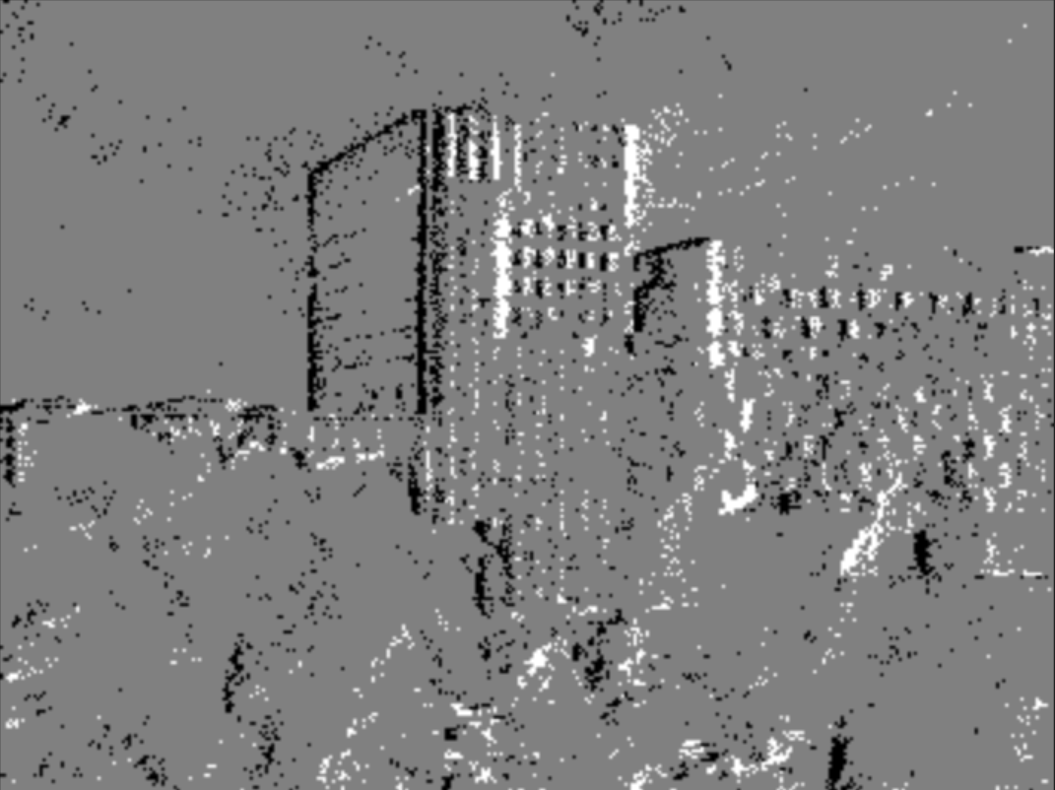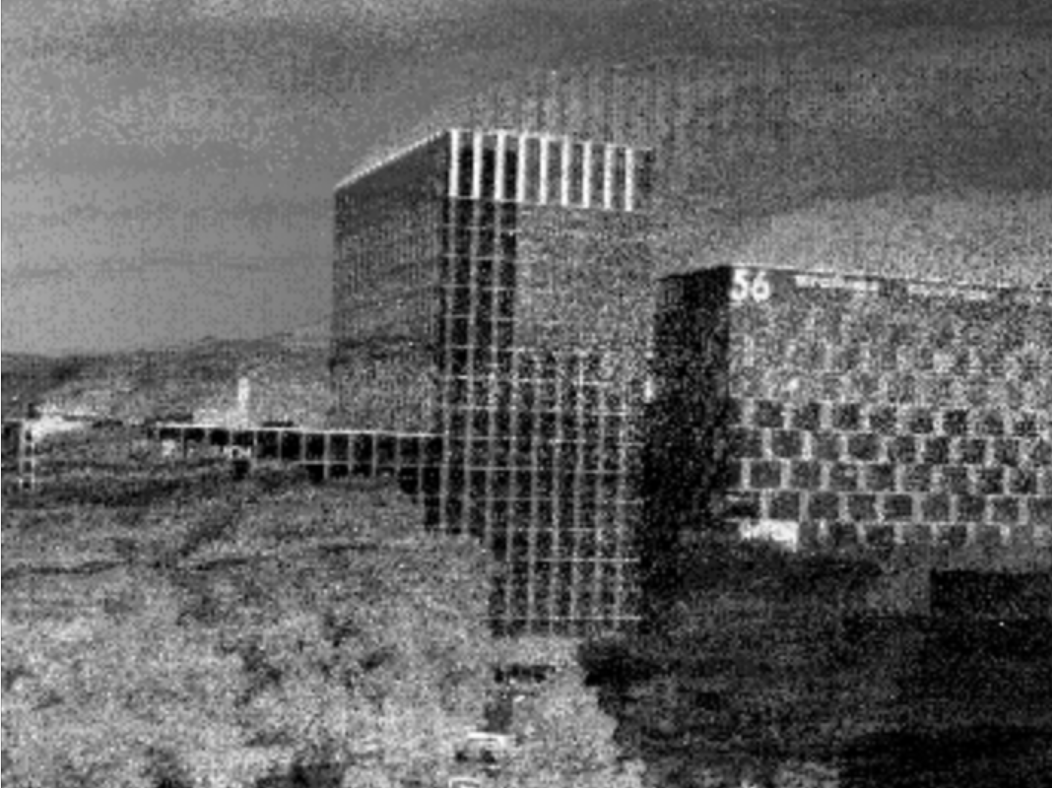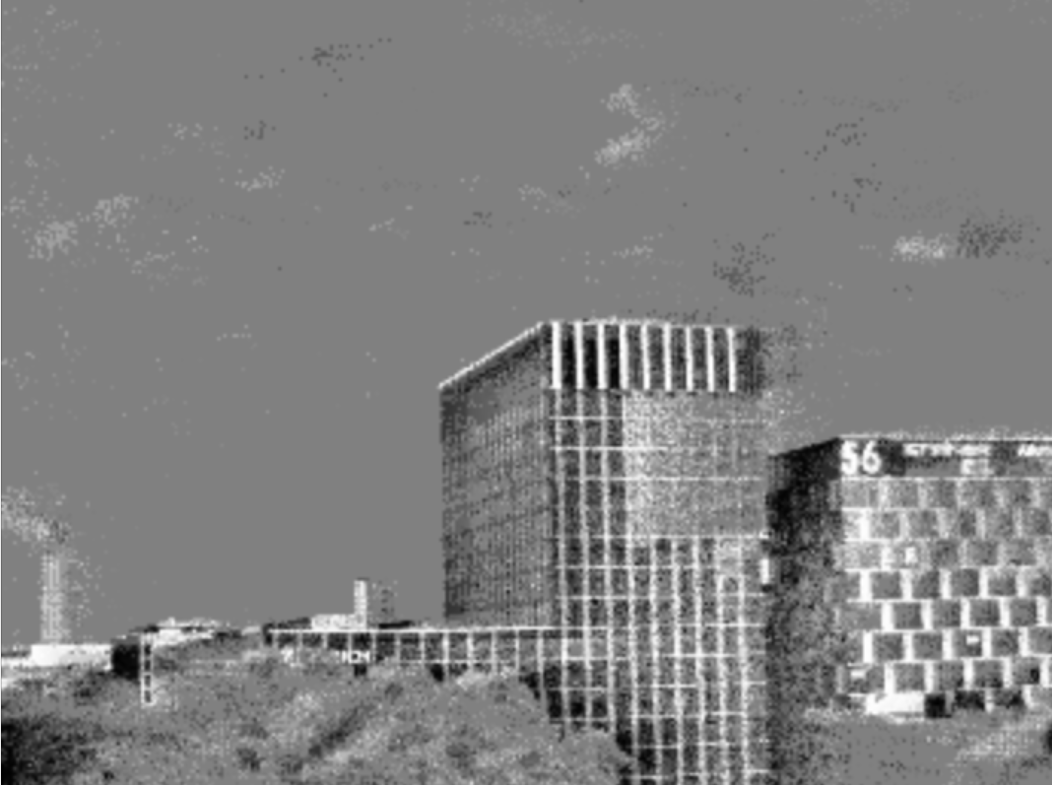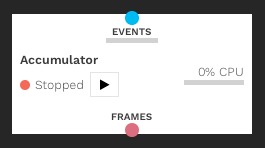Accumulator Module
Entry in Module Selection |
Module Appearance |
|---|---|
|
|
What Does The Accumulator Do?
The accumulator module reconstructs frames from events by accumulating the changes to obtain a corresponding intensity information. The computation of the intensity is done with a configurable decay function.
Use cases:
Create high-speed event frames (more details here)
Long term noise accumulation
Creating representations to feed into a convolutional neural network
Accumulation can be used whenever there is a need to convert events into frames
Note: More info about accumulator implementation can be found in the dv-processing documentation.
Accumulator Settings Overview
Accumulation Time
Accumulation time sets the time window to accumulate events before sending out a new frame in milliseconds. This effectively sets the frame rate of the accumulator. The accumulator does not reset the frame at generation time, the contents of the old frame are carried over to the next frame. To achieve an effect where the frame gets cleared out after each frame, set the decay function to Step and make sure the Decay param is set to the same value as the accumulation time. Note that this value is in milliseconds, while the other is in microseconds.
Decay Function / Decay Parameter
One of None, Linear, Exponential, Step. Defines the data degradation function that should be applied to the image. For each function, the Decay param setting assumes a different function:
Function |
Decay param function |
Explanation |
|---|---|---|
None |
No function |
Does not apply any decay |
Linear |
The slope |
Assume the intensity of a pixel is |
Exponential |
The time constant |
Assume the intensity of a pixel is |
Step |
No function |
Set all pixel values to neutral potential after a frame is extracted. |
Event Contribution
The contribution an event has to the image. If an event arrives at a position x, y, the pixel value in the frame at
x, y gets increased / decreased by the value of Event contribution, based on the events polarity.
Except:
The resulting pixel value would be higher than Max potential, the value gets set to Max potential instead
The resulting pixel value would be lower than Min potential, the value gets set to Min potential instead
The event polarity is negative, and Rectify polarity is enabled, then the event is counted positively
Min Potential / Max Potential
Sets the minimum and maximum values a pixel can achieve. If the value of the pixel would reach higher or lower, it is
capped at these values. These values are also used for normalization at the output. The frame the module generates is an
unsigned 8-bit grayscale image, normalized between Min potential and Max potential. A pixel with the value Min
potential corresponds to a pixel with the value 0 in the output frame. A pixel with the value Max potential
corresponds to a pixel with the value 255 in the output frame.
Neutral Potential
Sets the neutral potential. This has different effects, depending on the decay function:
Function |
Neutral potential function |
|---|---|
None |
No function |
Linear |
The value the linear function tends to over time |
Exponential |
No function |
Step |
The value the frame gets reset to after getting a frame |
Rectify Polarity
If this value is set, all events act as if they had positive polarity. In this case, Event contribution is always taken positively.
Synchronous Decay
If this value is set, decay happens continuously for all pixels. In every frame, each pixel will be eagerly decayed to the time the image gets generated. If this value is not set, decay at the individual pixel only happens when the pixel receives an event. Decay is lazily evaluated at the pixel.
Note that both decay regimes yield the same overall decay over time, but the time it is applied changes. This parameter does not affect Step decay. Step decay is always synchronous at generation time.
Color Demosaicing
Adds a Bayer color demosaicing filter onto the generated frame. Note that this setting only makes sense when a color dvs camera is connected.
Example Configurations
High FPS Event Frames
For a use case with a very fast frame-based processing engine, one can get high-speed HDR images of the moving edges. The following settings give 1000 fps with frames that are exposed over 1 ms integration time.
Setting |
Value |
|---|---|
Accumulation time |
1 (ms) |
Decay function |
Step |
Decay param |
Ignored |
Min potential |
0 |
Max potential |
1 |
Neutral potential |
0.5 |
Event contribution |
0.5 |
Rectify polarity |
No |
Synchronous decay |
Ignored |

Exponentially Decayed Frame Reconstruction
The following configuration gives a good frame reconstruction if the scene has a lot of activity. The exponential decay is strong, which leads to strong shadows when a movement changes direction. The strong decay suppresses noise quite effectively.
Setting |
Value |
|---|---|
Accumulation time |
33 (ms) |
Decay function |
Exponential |
Decay param |
1000000 (us) |
Min potential |
0 |
Max potential |
0.3 |
Neutral potential |
0 |
Event contribution |
0.04 |
Rectify polarity |
No |
Synchronous decay |
Yes |
The fps can be arbitrarily set. In this example, Accumulation time is set to 33ms to achieve 30 fps. The quality is independent of the fps, if you require 1000 fps, you can set the Accumulation time to 1 ms.

Linear Decayed Frame Reconstruction
A reconstruction can also be achieved with a linear decay. Generally, this tends to preserve less detail but suffers less from shadows.
Setting |
Value |
|---|---|
Accumulation time |
33 (ms) |
Decay function |
Linear |
Decay param |
0.000001 (intensity / us) |
Min potential |
0 |
Max potential |
1 |
Neutral potential |
0.5 |
Event contribution |
0.15 |
Rectify polarity |
No |
Synchronous decay |
Yes |

Analogous to the exponential case, one can set the fps by changing the Accumulation time parameter.
Further Configurations
It is advised to experiment with the accumulator settings until the desired effect is achieved.

